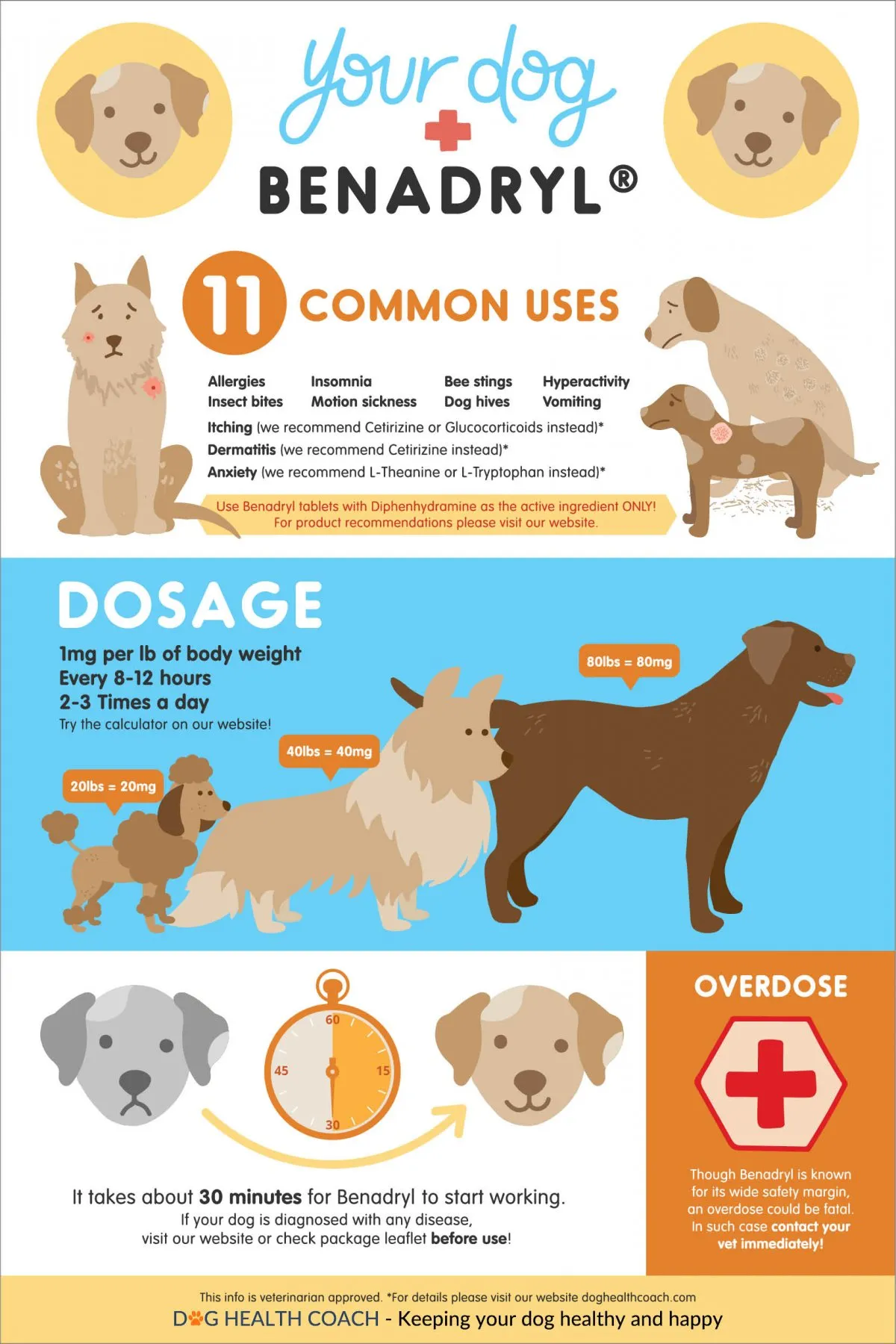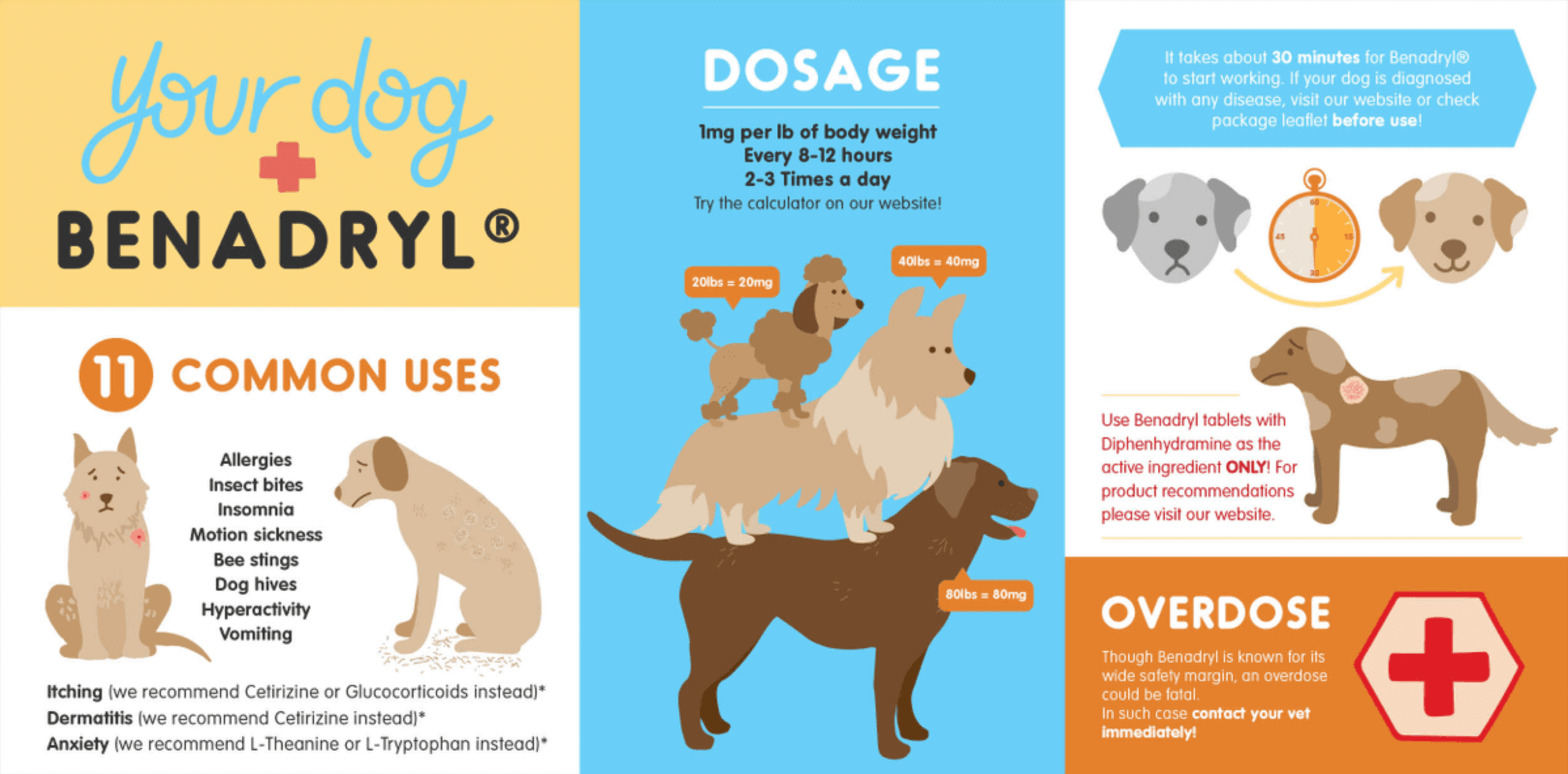How Much Benadryl For Dogs
How Much Benadryl For Dogs - As a pet owner, it can be difficult to watch your furry friend suffer from allergies, especially when it comes to severe itching or rashes. One solution that many people turn to is administering Benadryl to their dogs. Benadryl is an antihistamine that can help alleviate symptoms such as itching, inflammation, and swelling in dogs. However, it's important to remember that administering any type of medication to your pet should only be done under the guidance of a veterinarian. In this article, we will discuss the safe usage of Benadryl for dogs, including dosage, side effects, and benefits.
Is Benadryl Safe for Dogs?
One of the most pressing questions that pet owners may ask is whether or not Benadryl is safe for their dogs. The short answer is yes, but again, it should only be used under the supervision of a veterinarian. Benadryl is not dangerous to dogs when given in the appropriate dosage, and it can be helpful in treating a wide range of ailments including allergies, insect bites, and motion sickness. However, it's always important to err on the side of caution when it comes to your dog's health and wellbeing.
How Much Benadryl Should You Give Your Dog?
The proper dosage of Benadryl for dogs can vary depending on a variety of factors such as their weight, age, and any pre-existing medical conditions. Generally speaking, the recommended dosage of Benadryl for dogs is 1 milligram per pound of body weight. So, for example, if your dog weighs 50 pounds, you would want to administer around 50 milligrams of Benadryl. However, again, it's important to consult with your veterinarian to determine the proper dosage for your individual dog.

What Are the Possible Side Effects of Benadryl for Dogs?
While Benadryl is generally considered safe for dogs, it does have the potential to cause side effects. Some of the most common side effects of administering Benadryl to dogs include drowsiness, dry mouth, and urinary retention. In rare cases, more serious side effects such as vomiting, diarrhea, and seizures may occur. If you notice any of these symptoms in your dog after administering Benadryl, it's important to contact your veterinarian immediately.

Tips for Administering Benadryl to Your Dog
If you've decided to use Benadryl to treat your dog's allergies or other ailments, here are a few tips to keep in mind:
- First and foremost, always consult with your veterinarian before administering any medication to your dog;
- Make sure to give your dog the appropriate dosage of Benadryl based on their weight and any pre-existing medical conditions;
- When administering Benadryl, you can give it to your dog in the form of a tablet or liquid;
- Be sure to monitor your dog after administering their dose of Benadryl for any potential side effects;
- Never give your dog Benadryl that contains other medications such as acetaminophen or ibuprofen, as these can be harmful to dogs;
- If your dog experiences an allergic reaction to Benadryl or has any other adverse side effects, contact your veterinarian immediately.

When Should You Not Give Your Dog Benadryl?
While Benadryl can be helpful in treating many ailments in dogs, there are some instances in which it should not be administered. For example, if your dog has glaucoma or is taking certain medications such as opioids or sedatives, Benadryl may not be the right choice for them. Additionally, if your dog is pregnant or nursing, you should consult with your veterinarian before giving them Benadryl.

Beneficial Uses of Benadryl for Dogs
While Benadryl is most commonly associated with the treatment of allergies in dogs, it can also be helpful for other ailments such as:
- Nausea and vomiting caused by motion sickness or other digestive issues;
- Anxiety or nervousness related to travel or environmental triggers;
- Insect bites or stings that cause itching and inflammation.
Conclusion
Benadryl can be a helpful tool in treating a variety of ailments in dogs, from allergies to motion sickness. However, it's important to remember that administering any medication to your pet should only be done under the guidance of a veterinarian. Make sure to consult with your veterinarian to determine the proper dosage of Benadryl for your dog based on their weight, age, and any pre-existing medical conditions. Additionally, always monitor your dog for any potential side effects and contact your veterinarian immediately if you notice that your dog is experiencing adverse reactions to the medication. With the proper care and attention, Benadryl can be a safe and effective tool in helping to keep your furry friend happy and healthy.

Read more articles about How Much Benadryl For Dogs
Post a Comment for "How Much Benadryl For Dogs"